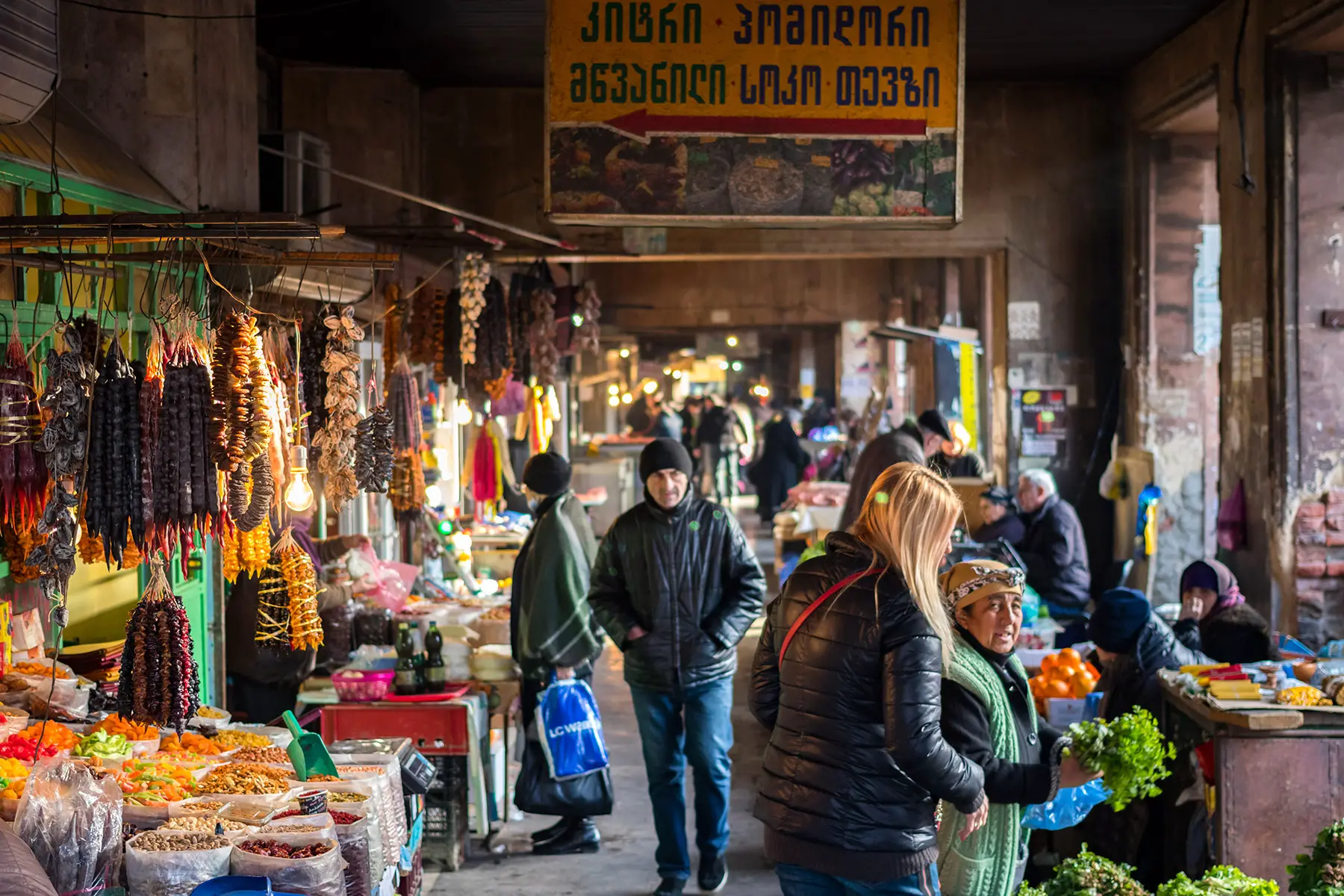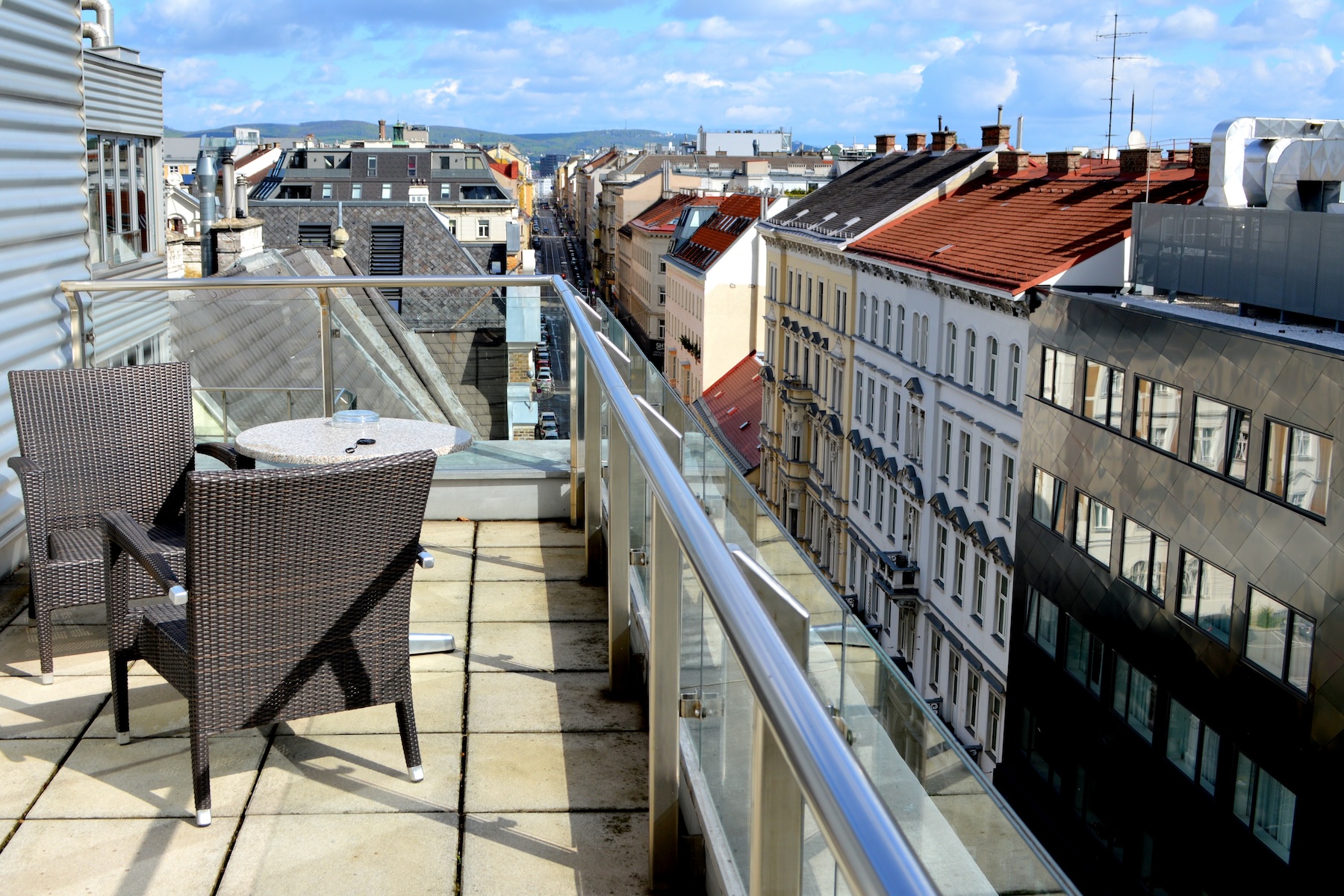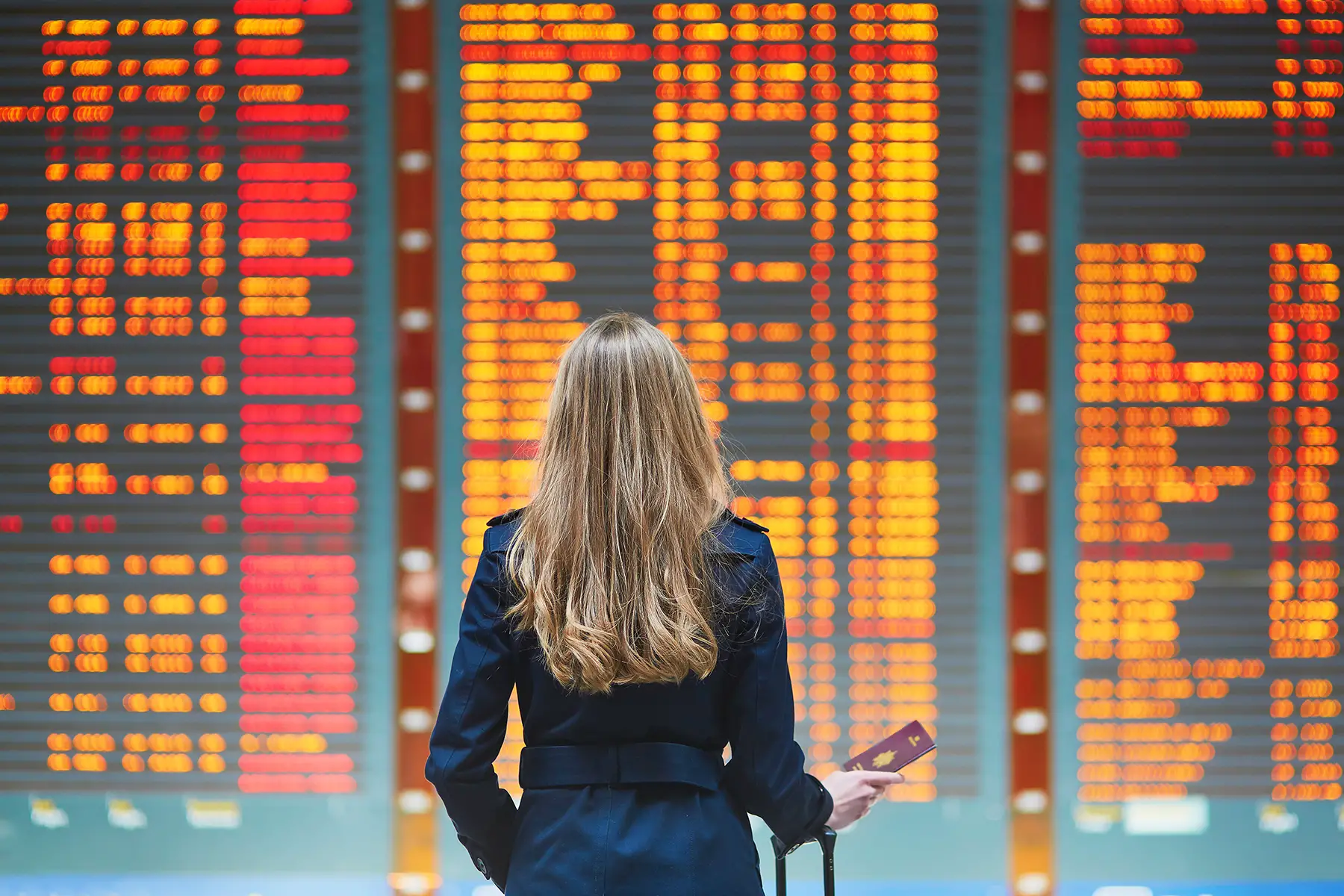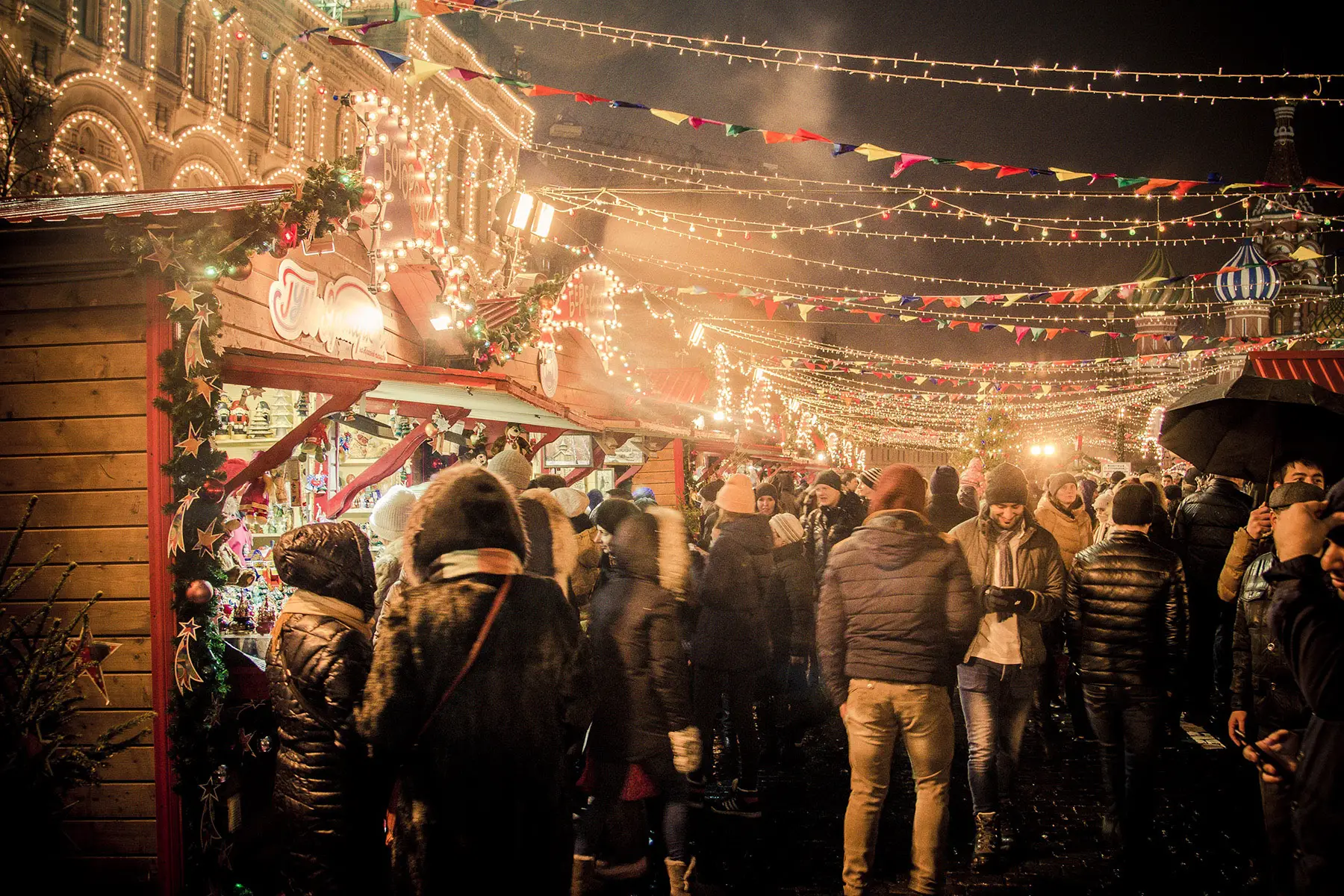Living in Vienna is something we should all aspire to. After all, Austria’s illustrious capital was named the world’s most livable city in 2019 for the tenth year in a row. It not only boasts an abundance of culture, food, and entertainment but also some of the most beautiful architecture the country has to offer.
However, if you are going to be living in Vienna, you will have the daunting task of deciding exactly where to live. And with so many neighborhoods to choose from, this is no easy task. This is because each Viennese district has its own character, charm, and facilities that make it attractive to different types of expats.
With this in mind, this helpful guide outlines everything you need to know about living in Vienna, including the following:
Spotahome
Looking for somewhere to rent in the beautiful Austrian capital? Spotahome takes the hassle out of househunting by doing the hard work for you. Their online platform lets you find, view, and book rental properties all from the comfort of your own home. Take the stress out of househunting in Vienna with Spotahome.
An overview of Vienna
In northeastern Austria, the capital city of Vienna occupies a spot at the easternmost end of the Alps and is split into two halves by the Danube river. However, when it comes to living in Vienna, most residents choose the west side. The city now boasts 23 districts, each one of which has its own local administrative district office (Magistratische Bezirksämter) which is subject to the mayor of Vienna. The city is Austria’s most populous, boasting nearly 2.6 million within the metropolitan area.
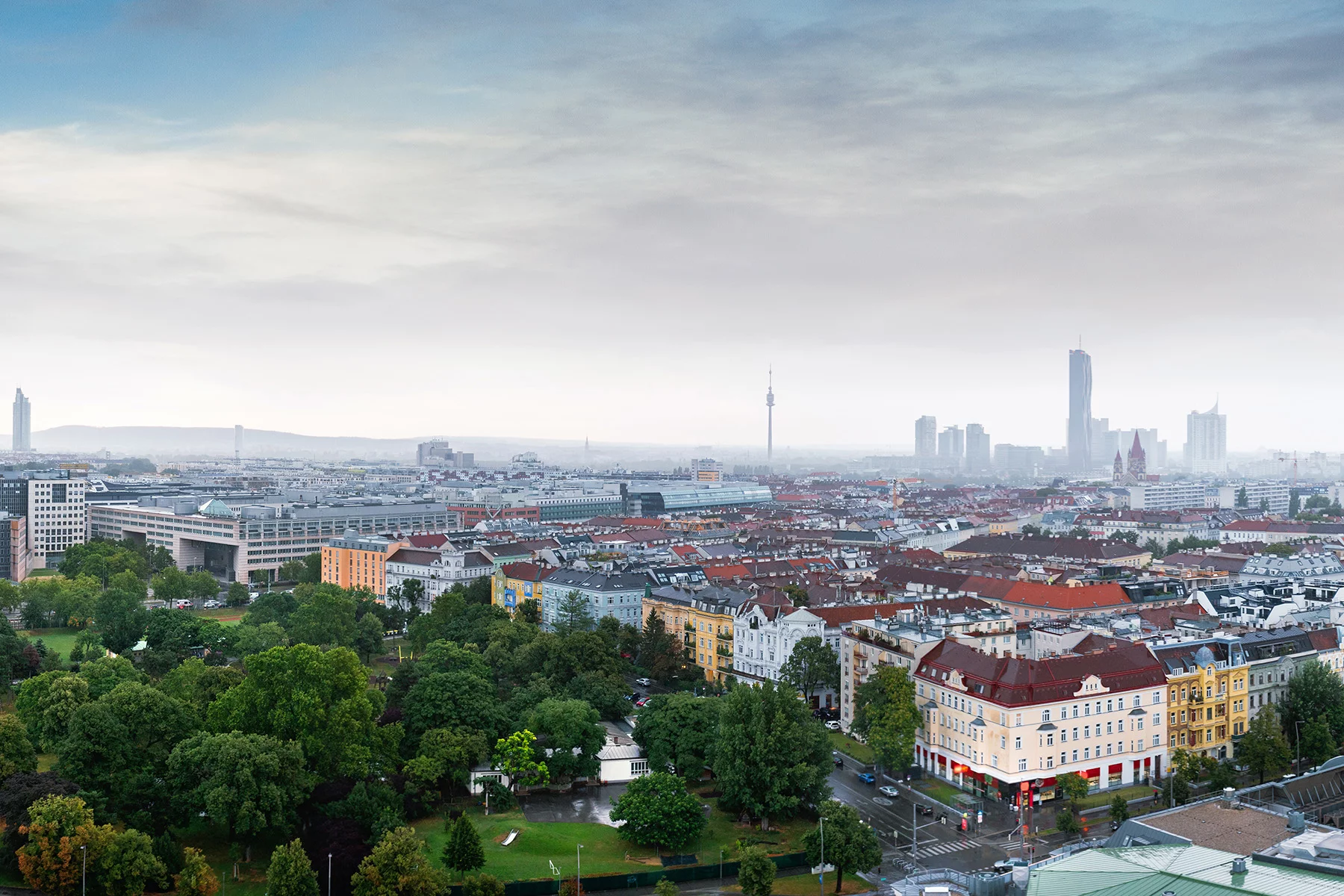
A short history of Vienna
The first record of settlement in the area is from 500BC in what is now the city center, the 1st district of Innere Stadt. At the time, it was the Celts that made camp by the Danube River. Of course, in 15BC, the Romans fortified the city. At this stage, it was a city called Vindobona and had a fortress surrounded by fields. In the 15th century, however, Vienna became the center of the Hapsburg Empire and the de facto capital of the Holy Roman Empire in 1437. At this stage, it was considered the cultural capital in the world, known as a center for arts and science, music, and fine food. Hungary also occupied Vienna for two years at this time, between 1485 and 1490.
Later, in the 16th and 17th centuries, local forces were roped into routing the Ottoman army outside Vienna, in the 1529 Siege of Vienna and the 1638 Battle of Vienna. Unfortunately, this then gave way to the Great Plague of Vienna in 1679, which saw nearly a third of the city’s population dead. Around 200 years later, with the Napoleonic Wars raging in the background, Vienna became the capital of the new Austro-Hungarian Empire and began playing a major role in European politics, hosting the Congress of Vienna in 1814/1815.
In 1850, Vienna received consent from the emperor to annex 24 surrounding villages. This, along with the razing of the city walls in 1857, the building of the Ringstraße boulevard, and the quick development of buildings, parks, and monuments, created the city we know today. As such, it was at this time that many of Vienna’s most famous buildings were built, including the Rathaus, the Burgtheater, the University, the Parliament, the natural history and fine art museums, and the Staatsoper.
The Viennese economy
Nowadays, Vienna is one of the wealthiest cities in the European Union. As such, it has a gross regional product of €47,200 per capita, which forms 25.7% of Austria’s GDP. Because of this, it is no surprise that service, industry, and commerce are big in the city. In fact, the service sector accounts for 85.5% of Vienna’s gross value, while industry and commerce account for a further 14.5%. In addition, Vienna has a (small) agricultural sector that mostly focuses on wine. However, the most important trades in Vienna are scientific and technological services, real estate, and manufacturing. Because of this, many international companies have headquarters here, including Hewlett Packard, Henkel, Baxalta, and Siemens.
Cultural forte
As well as its thriving economy, Vienna has a long musical legacy. In fact, many famous composers have lived and worked here, including Beethoven and Mozart. In addition, Sigmund Freud, who became the world’s first psychoanalyst, lived here.

Because of its safety, great public transport, strong business sector, education, and social services, Vienna ranks regularly as one of the best cities in the world, and one that offers a high quality of life. In fact, the Economic Intelligence Unit ranked Vienna first in its list of the world’s most livable cities in 2019. Similarly, it topped the 2019 Quality of Living Ranking by the Mercer Consulting Group for the 10th year straight.
Vienna’s diverse cultural mix
In 2019, over 30% of Viennese residents didn’t have Austrian citizenship. Of these, 251,129 were EU citizens, and a further 312,705 were third-country nationals. In general, foreign residents of Vienna are largely from Serbia, Türkiye, Germany, or Poland.
Innere Stadt
The true heart of Vienna, the 1st district is full of historical sites, major tourist attractions, and so much more. However, it is not generally a place where most locals would live. This is simply because accommodation here is prohibitively expensive. Nevertheless, if you can afford it – or you are living in Vienna on your company’s dime – this is grand living at its finest.
The environment in the Innere Stadt
As far as city living with kids goes, Vienna’s Innere Stadt is probably as family-friendly as they come. This district offers an urban experience but with a touch of rustication in the form of big green lungs like Rathauspark, Heldenplatz, Burggarten, and Wiener Stadtpark. In addition, there is a wealth of attractions that are perfect for weekend explorations en famille. This is also a safe district (not that any part of Vienna is exactly bad or unsafe) and it tends to get very quiet at night.
Facilities in the Innere Stadt
As the real city center, the Innere Stadt has more things to do than you could hope to tick off your list. In fact, the area is home to many historical sites and some of Vienna’s biggest attractions. As such, while you are here, be sure to visit the Hofburg – the seat of the former Hapsburg Empire – and the famous Spanish Riding Academy. You can also visit the grand St. Stephan’s Basilica, and all the city’s best museums and galleries, including the Albertina, the Natural History Museum, and more. In addition, you can take in a show at the Wiener Staatsoper.
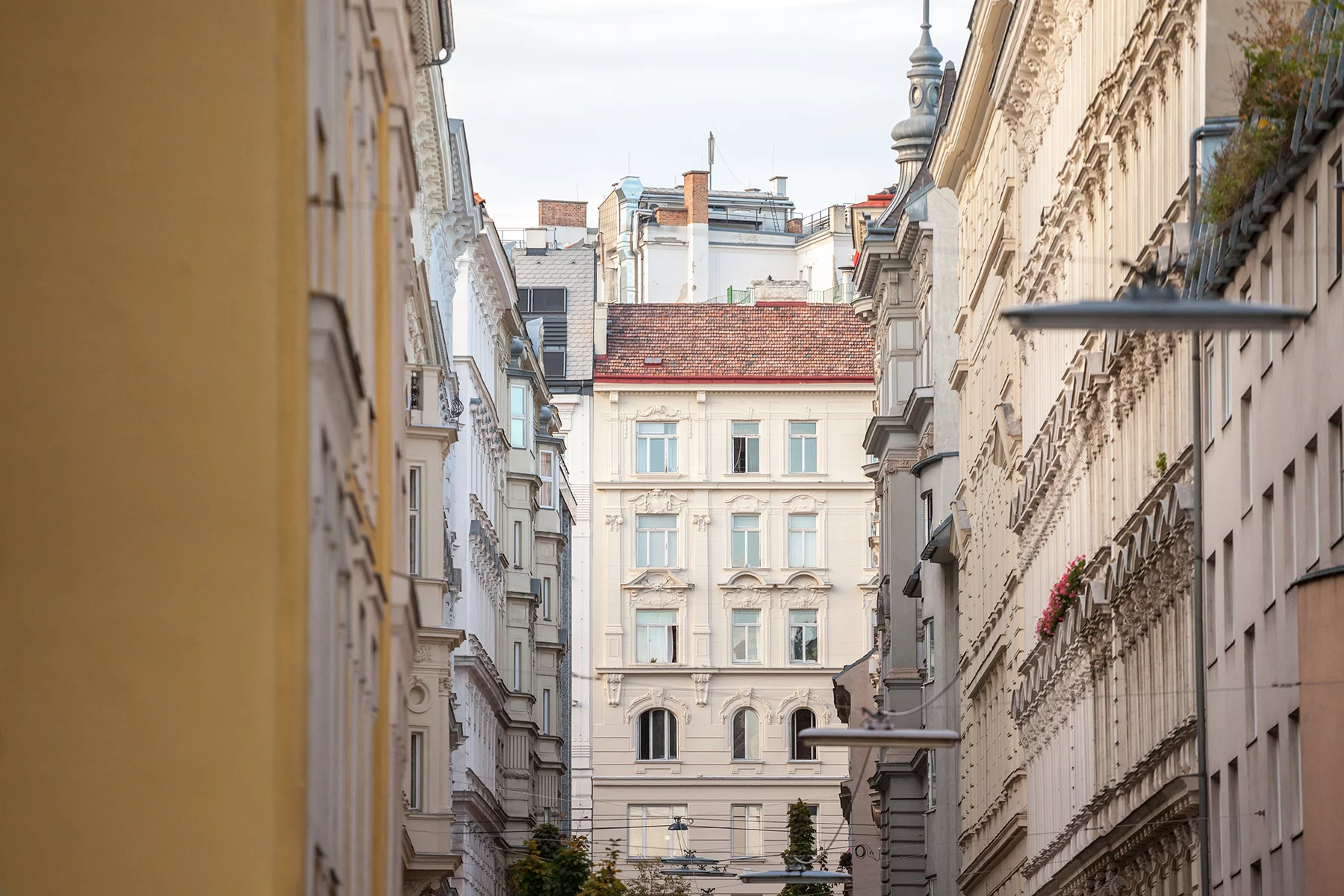
Of course, there are also plenty of restaurants and bars to explore. You can enjoy modern Austrian fare at Restaurant Steirereck, try fusion Japanese at Shiki, unique Greek at Restaurant Konstantin Filippou, and Michelin-starred vegetarian at TIAN Bistro. You should also be sure to try a Sachertorte at its original home, Hotel Sacher, and the famous Café Central coffeehouse. Additionally, you will find a bit of everything when it comes to shopping in the Innere Stadt; from small local convenience stores and high street brands to elegant galleries and boutiques.
The Innere Stadt also boasts several schools, including many state schools. The Vienna Business School is also here, as is the main building of the University of Vienna. In addition, the Innere Stadt has a few hospitals, including Parachute, Krankenhaus Barmherzige Brüder, and City Medical OG. You can read more about hospitals in Austria in our helpful guide.
Transportation in the Innere Stadt
Of course, the best part of living in Innere Stadt is that you will not really need to commute. The whole city of Vienna is at your doorstep and you will also have access to all the transport links you want. In addition, there is plenty of parking available. However, this comes in different forms. For instance, residential permits are available to residents, but there are also paid short-term parking lots available for less than €5 a day.
Housing in the Innere Stadt
The Innere Stadt is the heart of the former imperial Hapsburg Empire, so the neighborhood is home to the well-heeled. As such, homes here are, in a word, gorgeous. In fact, you can expect glorious architecture and beautiful interior design details. That said, all this does not come cheap, and homes in the Innere Stadt are among the most expensive in Vienna. As such, apartments here start from nearly US$2 million for a one-bedroom – and yes, most people here tend to buy. Nevertheless, if you choose to rent, you can expect to pay at least €1,500 for a swish studio.
Work and business in the Innere Stadt
This is the commercial heart of Vienna, so as an expat, you can expect to be working here. That is, of course, unless you are a diplomat – embassies are generally located elsewhere. All the big names are here, from Deloitte and Boston Consulting Group to Google and McKinsey. Of course, there are also local companies. Perhaps surprisingly, the Innere Stadt is also home to numerous pharmaceutical companies such as Biogreen Pharma, Currex Pharma, and APH Pharma HandelsgmbH.
What Innere Stadt is best for
If you want to walk to work and the company is paying your rent, this is the place to be.
Leopoldstadt
Consider this an extension of the Innere Stadt, on the other side of the Danube river. In fact, Vienna’s 2nd district has just as much to recommend it at the first – but probably offers better living in Vienna than the Innere Stadt.
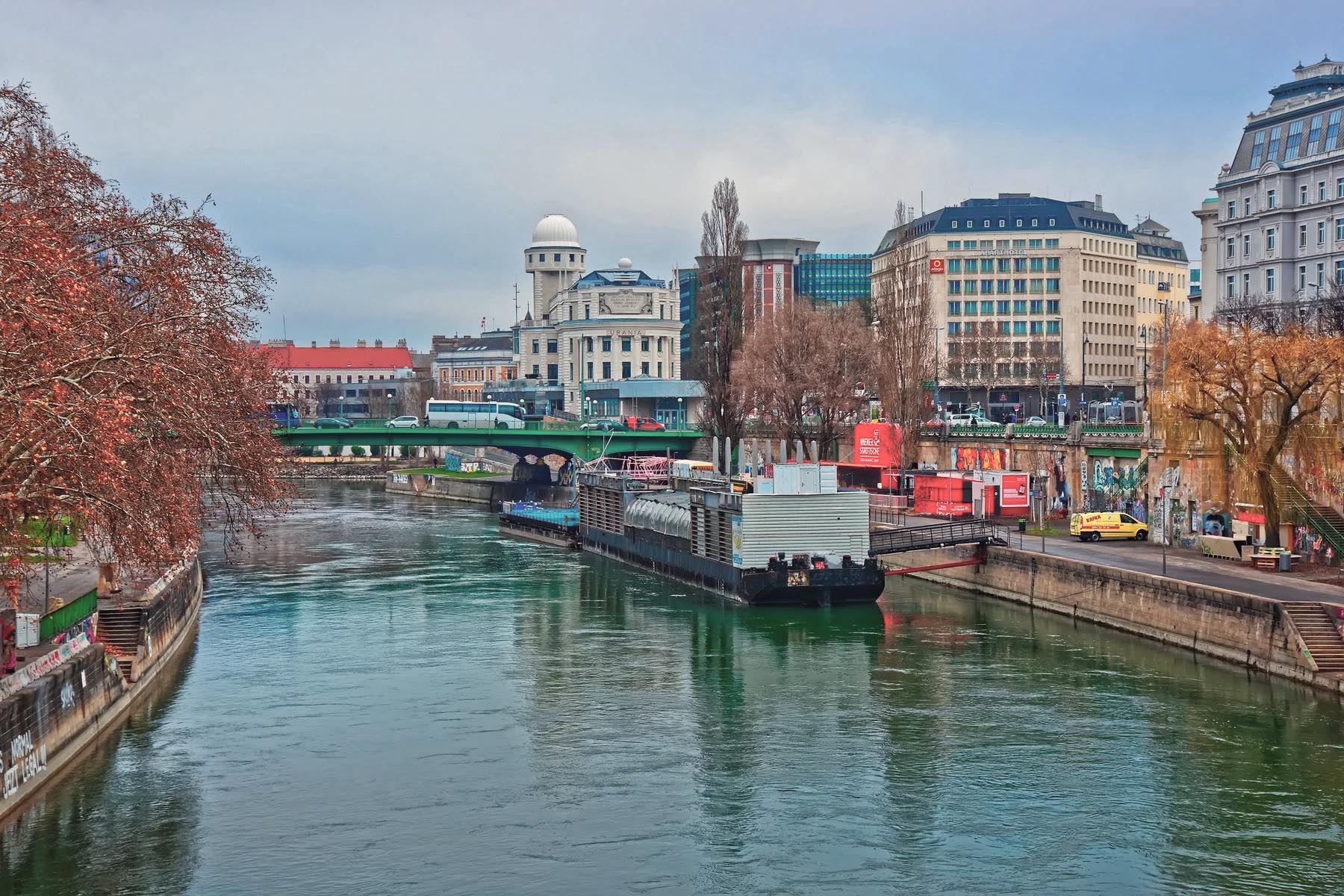
The environment in Leopoldstadt
Leopoldstadt is, quite simply, a great place to live. The sprawling district has plenty of restaurants, bars, cafés, shops, and other facilities, as well as an abundance of nature and great apartments. It is also reasonably multicultural and there is a big Jewish diaspora here; so as an expat, you won’t feel like you stick out. It is also generally pretty safe – although you will want to avoid lingering around the Praterstern train station. All of this adds up to an expat and family-friendly district.
Facilities in Leopoldstadt
This area of Vienna is home to some exquisite city-center nature. The six-million-square-foot Prater Park is perfect for idyllic picnics and letting kids run around. The picturesque Augarten is another great green lung in the area. Meanwhile, the Würstel Prater is a twee amusement park that has its roots in the 18th century Austro-Hungarian Empire and a firm place in the hearts of every local Viennese.
Leopoldstadt also has a wealth of facilities that make this a great neighborhood to live in. As such, you can expect plenty of restaurants, bars, and coffeehouses. And, all of these offer cuisine from all over the world. In fact, Café Ansari is one of the best brunch spots in town, while Balthasar is known for its third-wave coffee, and Mochi specializes in sushi and Japanese tapas. In addition, Karmelitermarkt and the Jewish district have great cafés.

Of course, the neighborhood also has the WU Executive Academy (Vienna University of Economics and Business). Webster Vienna Private University is also in the area. Leopoldstadt also has numerous attractions and museums, which makes it a great day out. The Vienna Planetarium is here, as is the home of the famous Vienna Boys’ Choir and the intriguing Vienna Crime Museum. This was also once Vienna’s traditional theater district, although now only the Odeon Theater – where the Neue Oper Wien appears – remains.
Transportation in Leopoldstadt
As the 2nd district, Leopoldstadt still has good transportation links. In fact, the U2 metro line offers direct access to the Innere Stadt. You can even stroll along the Praterstraße boulevard for a scenic route into the city center. In addition, you can expect to use residential permits to park if you live here. When visiting, however, you can try affordable short-term lots or look for a few street lots.
Housing in Leopoldstadt
Being such a diverse neighborhood, it should come as no surprise that Leopoldstadt also offers a variety of accommodation options. Of course, apartments are still very much de rigueur here. But, there are smaller, more affordable options ranging from cute studios (around €1,000) to swanky three-bedroom penthouses (€6,000). Renting is a popular choice, but if you want to buy, apartments here can range in price from an affordable €150,000 to a cool €2 million.
Work and business in Leopoldstadt
As more of a residential neighborhood, the main businesses here are commercial enterprises like restaurants, cafés, and small shops. As such, many of the jobs here are in the service industry. However, Leopoldstadt can be a good place for freelancers or those looking to start sole trader businesses from their homes. In addition, Leopoldstadt has several big pharmaceutical and technological companies, including Ericsson, SAP, Infonova, Netconomy, Janssen-Cilag, Actelion, and TissueGnostics.
What Leopoldstadt is best for
If you want city center living in Vienna with an abundance of nature, this is exactly where you need to be.
Landstraße and Wieden
They might not be as fancy as the Innere Stadt, but both Vienna’s 3rd and 4th districts have much to offer. However, Landstraße is low-key and relaxed, while Wieden is much more hip and cool.
The environment in Landstraße and Wieden
Both Landstraße and Wieden offer good, easy, family-friendly living in Vienna. However, as previously mentioned, Landstraße offers a quieter life, while Wieden is good for young families who want more around them. Nevertheless, both are safe and solid choices.
Facilities in Landstraße and Wieden
Landstraße tends to be more residential, so it doesn’t offer too many amusements or shopping facilities. Of course, there are grocery and convenience stores, while Hotel Daniel is a local hidden gem for brunch and the Rochusmarkt has a few notable cafés and wine bars. As Vienna’s original hipster district, though, Wieden has a lot more going on. In fact, there is a mini-Chinatown, plenty of fresh food grocers and delis, an abundance of independent fashion boutiques, and lots of bars and cafés. In addition, Wieden is right by the famous Naschmarkt.

While you are in Landstraße, it is worth checking out the gorgeous, Baroque-style Belvedere Museum and gardens, as well as the Military History Museum. Architecture buffs will also want to see the Hundertwasser’s famously colorful and avant-garde apartment block.
In Wieden, you will also find Motto; a nightclub that lays claim to being one of Vienna’s best gay clubs and is famous for being the place where Eurovision winner Conchita Wurst performed regularly before her victory.
There are also a few schools in the area, including an international Montessori preschool, a music school, and numerous public local schools. Similarly, Wieden has several local schools, as well as the Vienna Technical University (TU Wien) and INNES Institute Vienna. Additionally, there are several clinics in the area.
Transportation in Landstraße and Wieden
As Vienna’s third and fourth districts, Landstraße and Wieden both border the Innere Stadt. As such, you can expect great transportation links here. Notably, Wien Mitte station is in Landstraße, which offers direct trains to the Vienna airport and regional links. In addition, if you are a walker, you can easily amble along into the Inner Stadt. Like the rest of central Vienna, you can expect a mix of residential parking and short-term lots.
Housing in Landstraße and Wieden
With Landstraße being home to several embassies and Wieden being a choice for students, artists, and young families, apartments in the third and fourth districts offer a range of accommodation options. As such, when renting, small, but well-designed apartments start at €800 a month while large, flashy three-bedrooms cost around €5,000 a month.

Work and business in Landstraße and Wieden
Being a quieter part of town and largely residential, Landstraße is not somewhere the Viennese think of as a working center. As such, jobs here are usually in the service sector, in the local shops, hotels, restaurants, and cafés. That said, the exceptions here are the embassies, which provide a range of white-collar jobs. Similarly, people living in Wieden commute to other areas to work. However, being rather more commercial, there are far more service jobs here than in Landstraße.
What Landstraße and Wieden are best for
Lean towards Landstraße if you have a family and are looking for a quieter pace of life. Otherwise, go wild in Wieden.
Währing and Döbling
The 18th district, Währing, is popular with expats because of its grand, elegant homes and international schools. Meanwhile, Döbling, the 19th district, offers easy access to Vienna’s best vineyards and hiking among nature.
The environment in Währing and Döbling
Outside of the visually arresting Innere Stadt, Währing and Döbling may just be the two prettiest districts in Vienna. The former has stunning architecture, village charm, and that stunning public park, while the latter has even more incredibly beautiful mansions and plenty of breathtaking natural surroundings. In addition, both are similarly family-friendly, offering easy suburban living with city access, and are huge draws for expats. As such, you will be more likely to rub shoulders with foreign diplomats and international commerce titans as you are with well-heeled locals. Nevertheless, both the 18th and 19th districts are peaceful and very safe.
Facilities in Währing and Döbling
Döbling is the gateway to Vienna’s vineyards, so you can explore the wealth of the capital’s wine region and hunker down at the many Heuriger wine taverns. For Viennese who don’t live in the area, this is the reason to come here. Similarly, Währing’s Türkenschanzpark is a vast, tranquil park that is a destination in itself.
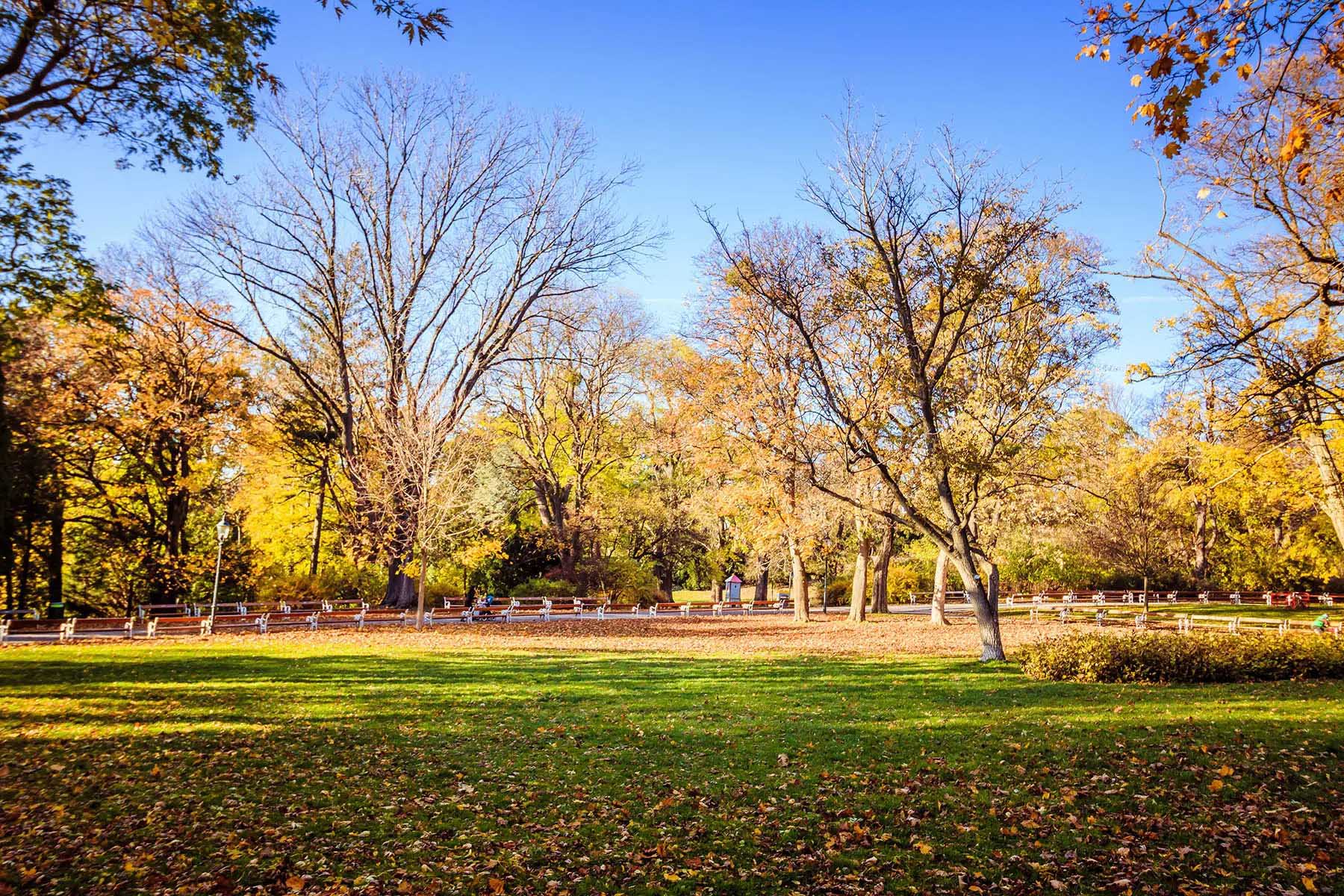
Being largely residential districts, there are not too many restaurants and bars around. That said, SLUbar is a popular drinking den that specializes in gin. In addition, Währing is home to the lively Kutschkermarkt with all its alfresco stalls and plenty of coffee spots like Meierei Diglas.
In addition, Währing and Döbling offer plenty of schools, many of which are suitable for expat children. As such, parents may choose to live here so their kids can attend institutions like The American International School of Vienna, MERIDIAN Bilingual Primary School, Amadeus International School of Vienna, or Vienna European School. Furthermore, there are several higher education schools in the district, such as Lauder Business School, the University of Natural Resources and Life Sciences, and the University of Vienna Institute for Astronomy.
Another drawcard for families is the presence of several private hospitals, including Rudolfinerhaus Privatklinik and Privatklinik Döbling, which offer good quality, attentive services.
Transportation in Währing and Döbling
You might feel a world away in the 18th and 19th districts, but you are really just minutes from the Innere Stadt. As such, you can hop onto one of the many buses or trams and be in the city center within 15 or 20 minutes. Döbling is also at the end of the U4 line, which offers a quick zip into the heart of the city. Parking is far easier here, too, especially if you live in a standalone home or villa.
Housing in Währing and Döbling
Being a bit further out of the city center, Währing and Döbling offer more space and accommodation ranging from rental apartments to houses for sale. As such, you can really have a choice of where to live in these two districts. However, the top choices are the grand old homes and mansions that lace these historically upper-crust districts. If you are looking to buy, then you can expect to see prices starting from €90,000 for a small ground-floor apartment and sky-rocketing up to €8 million for a truly palatial, design-forward three-bedroom home with four bathrooms, a winter garden, and a pool. Of course, if you want to rent, prices are far less. For instance, you can easily find a modest studio apartment from €700 a month or a lovely two-bedroom place for €2,500 a month.
Work and business in Währing and Döbling
People working in the 18th and 19th districts have several choices when it comes to employment. This is because there are many different types of businesses here. As such, depending on your skills and qualifications, you may be able to find a job at the schools or hospitals, or even the vineyards, shops, and cafés. In addition, there are several embassies here that might be an option if you are looking for non-diplomatic administrative work. In addition, you will find a range of local companies such as fashion headquarters, software brands, and more.
What Währing and Döbling are best for
Expat-friendly family living that feels out of the city but offers access to everything worth living in Vienna for.
Mariahilf
Mariahilf is a great blend of tourist-friendly fun and local hidden gems. This makes it a great choice for expats living in Vienna who want to test the local waters without completely immersing themselves out of their depths.
The environment in Mariahilf
Generally, Mariahilf can be family-friendly. The only caveat, however, is that it is very hilly, so you probably won’t want to be pushing strollers or lugging toddlers up the steep incline. Conversely, there is a strong neighborhood vibe and plenty of little parks. In addition, there are several schools in the area. There is also a good mix of long-time locals and more recent expats, so new arrivals will acclimatize quickly here. And again, safety is not a real concern.

Facilities in Mariahilf
Mariahilf is sometimes referred to as one of the top 15 coolest districts in Europe, so you know there is plenty on offer here. Of course, it is home to many traditional Austrian coffeehouses, so you can get your fix at Café Sperl, Café Phil, Café Kafka, or Café Jelinek. There are also lots of international restaurants here, so you can feast on noodles at ra’mien one night, sushi at Kuishimbo the next, then pizza at Disco Volante the night after that. In addition, you can peruse all the high street shops on pedestrianized Mariahilferstraße, the city’s famous shopping street. But, while here, you will want to follow the cobbled streets off the main avenue to find independent boutiques and vintage stores. Similarly, Gumpendorferstraße is popular with locals for its vintage furniture and clothing flea market.
While Mariahilf is a short distance from popular spots like the MuseumsQuartier and all its magnificent galleries, the Kunsthistorisches Museum Wien, and the Wiener Staatsoper, the district has its own attractions. In fact, there are plenty of independent galleries like Rabbit Eye Movement, and Galerie Lehner. Additionally, there are many examples of local architect Otto Wagner’s work, including the apartments at Linke Wienzeile 40, and the Neo-Renaissance Semperdepot in the Lehárgasse. The Vienna Aquarium is here, too, as is the infamous Club Titanic which is a right of passage for anyone who grew up in Vienna.
Mariahilf is a good choice for expats with children, as it has numerous schools in a city-center location. However, most of these tend to be local schools, like the Mariahilf Gymnasium, and the Neues Wiener Konservatorium. Nevertheless, the Cambridge Institute Vienna is here, as is a German-language private Catholic school. In addition, there are several hospitals, including the Sisters of Mercy Hospital Vienna and Ambulatorium Klimax.
Transportation in Mariahilf
Once again, Vienna’s sixth district is very central, bordering on the Innere Stadt. As such, you can easily walk into the main city center, or jump on buses, trams, and the U-Bahn. Additionally, Mariahilf has plenty of short-term parking lots. Of course, if you want to walk, you can stroll down the Mariahilferstraße – the local pedestrian shopping street – into the city center within 30 minutes.
Housing in Mariahilf
Homes in Mariahilf tend to be reasonably large apartments in lovely older buildings. If you want to buy, a decent two-bedroom place will cost over €250,000. Of course, this being Vienna, prices skyrocket up from there, depending on the size of the apartment and the building it is in. Similarly, rental properties can vary greatly in cost, although they are universally well done up. You can expect to pay around €1,000 for a cozy, pretty studio and up to €3,000 for a charming two-bedroom.
Work and business in Mariahilf
As well as all the expected small local businesses that offer service jobs, Mariahilf is home to numerous Austrian companies and even some international brands; therefore, there are a variety of jobs available. For example, Berlitz’s Viennese office is here, as is the local Towers Watsons branch. As in many parts of Vienna, there are also numerous pharmaceutical and computing or software companies in Mariahilf.
What Mariahilf is best for
Young, first-time expats who want to get their feet wet, but are a little nervous about going too local too quickly.
Neubau
Consider this Vienna’s answer to New York’s Brooklyn. It’s a trendy, all-encompassing neighborhood where you are just as likely to see edgy students and young families as too-cool-for-old-age grandmas. The best part? It is located on the edge of the Innere Stadt.
The environment in Neubau
Although perhaps not as family-friendly as certain other neighborhoods, Neubau can still be a good choice for young families living in Vienna. This is because there are a few parks where kids can let their hair down, including Josef-Strauß-Park, Siebensternpark, and Andreaspark. Additionally, there are several kindergartens and primary schools.

Neubau is also a safe area, although not always exactly quiet. This is because there are a wealth of restaurants, bars, and cafés, so there are always people out and about in the district. In addition, while the district is not exactly quiet all the time, it is reasonably peaceful.
Facilities in Neubau
One of the best things about living in Vienna is having access to a wealth of international restaurants, and Neubau has plenty of these. As such, residents can satisfy their appetites with whatever cuisine they feel like; whether it’s Austrian at Schnitzelwirt, Japanese at Tsutenkaku Sushi-Haus, or vegan at Restaurant Landia. Of course, there are plenty of cafés and coffeehouses, but the most famous of them is Café Espresso, which turns into an intimate bar by night.
Although Neubau residents have easy access to Vienna’s Museumsquartier, the district has plenty of artsy hidden gems of its own. In addition to a plethora of captivating street art and small galleries, the area is home to the Volkstheater. There are also plenty of shops, mainly along the main strip of Neubaugasse, where you will find everything from thrift stores to high-end boutiques. Be sure to check out Burgasse 24, KingPin, or Bootik 54 for vintage clothes, and Tongues record store. Each winter, Neubau also hosts the Spittelberg Christmas Market in its alleys, offering a true winter wonderland experience.
Families will be glad to know that Neubau also has several schools, although these are mainly kindergarten and primary schools. For example, there is the International Bilingual Kindergruppe Kids Gallery Vienna, the Vienna International Montessori School (which sits on the cusp of Mariahilf), Guidepost Montessori, and European Primary School. In addition, Neubau has one hospital – Prosenex Ambulatorium BetriebsgmbH. So if you choose to stay here while living in Vienna, you may need to look for medical services in other districts such as neighboring Mariahilf.
Transportation in Neubau
Neubau has a wealth of public transport connections due to its very central location, right next to the Innere Stadt. As such, you can easily find bus and tram routes that will get you into the main city center and other parts of Vienna. Additionally, the U-Bahn U3 line stops at Neubaugasse station.
Housing in Neubau
Like Neubau itself, accommodation here can vary widely. Because of this, you could easily find a clean, cozy one-bedroom flat for €1,200 a month or €3,000 a month. However, if you look around, you could also find yourself splashing out on a grand three-bedroom penthouse overlooking parliament for almost €6,000 a month. While older long-term residents usually live in properties they bought years ago, younger recent arrivals are more likely to rent in Neubau.
Work and business in Neubau
This eclectic neighborhood boasts plenty of different businesses, so you may be able to find a job by seeing if any of them are advertising for positions. This would work for the district’s smaller local businesses, such as yoga studios, hotels, and florists. However, Neubau is also home to numerous pharmaceutical companies like Mundipharma, Kozbach Pharma, SICO Pharma, and Bey Pharma. There are also several tech companies in the area, including Braintribe Technology, tenfold Software, and Semantic Web Company.
What Neubau is best for
If you are living in Vienna as a single person or with a young family and love an artsy vibe and being in the thick of things, Neubau is for you. This is not a traditional suburb, though, so choose wisely.
Ottakring
Bohemian Ottakring is perhaps one of the hottest residential neighborhoods in Vienna. Historically, the 16th district has been home to a large working-class immigrant population. Now, though, locals are moving in droves as they realize just how cool, multicultural, and community-minded it really is.
The environment in Ottakring
Because of its feeling of community, Ottakring is a decent spot for families. And, being so multicultural – there is a large Turkish and Balkan population – expats will certainly feel welcome. It might not be Vienna’s prettiest district, but there is an abundance of nature; from small Yppenpark in the east and Karl-Kantner-Park in the center. In the west, you can also commune with nature at Steinbruchwiese and Otto-König-Warte or perhaps take the Ottakringer Wald hike.

However, Ottakring is not considered to be one of the best neighborhoods. In fact, many people living in Vienna see it as a bit rough. Although it’s not dangerous per se, some parts might not be as safe as other areas of the city.
Facilities in Ottakring
There is a reason why Ottakring is now often named Vienna’s coolest district. There really is so much happening here. Residents have easy access to the Manner sweet factory, the oldest Heurigen (tavern) in Vienna, craft beer and whisky at Schwarzer Rabe, and Staud’s, a family-run business specializing in Austrian jam. In addition, there are plenty of cool little galleries with compelling exhibitions, such as Kunst Tankstelle.
While here, you can also check out Beimir, a stylish little bar, eat pizza and tapas at local icon Pizzeria da Filippo, try Turkish food at Kent or Café Frida, and feast on hummus at Israeli spot Mani. And, if you are feeling a little thirsty, you can head to Beimir, a stylish little bar, sip sundowners on the WIRR rooftop, or grab a pint at the Ottakring brewery.
Feeling a little spendy? Then why not put your bartering skills to the test with enthusiastic vendors at the Brunnenmarkt, where you will find everything from cheese and meats to clothes, homeware, and pets. There are also plenty of tiny second-hand stores around the district – you will just have to wander at will until you find them.
There are plenty of schools in Ottakring, although most of these are local public schools so might not be the best choice for expat kids. However, there is also a Montessori kindergarten. There are also several hospitals in the area, including Wilhelminenspital and Wiener Gesundheitsverbund – Klinik Penzig, and Primed Klinik in the west.
Transportation in Ottakring
Although on the outskirts of Vienna, Ottakring has plenty of transport links. As such, the U3 and U6 U-Bahn lines run through the district, while the Wien Ottakring train station offers connections to other parts of Austria. In addition, there are plenty of buses and trams, so you are never really too far from the center of Vienna.
Housing in Ottakring
Ottakring is home to a range of different accommodations, however, they likely won’t be as elegant or grand as you would find in neighboring Josefstadt, for example. Because of the industrial area and factories around the Gürtel, there is plenty of working-class residential housing. Further west, though, there are villas hidden amidst greenery near the Ottakring cemetery. Nonetheless, you can expect to pay around €600 a month for a little studio or €2,000 a month for a two-bedroom apartment.
Work and business in Ottakring
In Ottakring, commercial interests are centered around the east side of the area. There is a range of businesses here, such as hotels, pharmacies, banks, and shops. However, there are also bigger companies specializing in different industries. Bayer’s Austrian headquarters is here, as is the showroom for FIBARO home systems, the offices for G.L. Pharma.
There are several software companies too, such as M-Computer HandelsgesmbH, IPfolio Alps, PROMAN Software, and PROMATIS. In addition, there are several manufacturing or construction interests, like Anton Göllner (cabinetry), RiTEC Kunststofftechnik (plastics), and Ing. Konrad Drescher Ges.mbH (construction).
What Ottakring is best for
Ottakring is the perfect place if you are living in Vienna but want a district that has grit, character, community, and plenty of cool things. After all, there is a reason why many Viennese end up making weekend trips here.
Where to find accommodation in Vienna
When living in Vienna, the best way to start your search for accommodation is to use the internet. This is because there are a plethora of websites where you can search for rentals. In addition, you could have a look at the ads in local newspapers or speak to real estate agents (Immobilienmakler).
Below is a list of websites you can use to start your search for a rental in Vienna:
However, if you are planning to buy a place, you are better off going directly to a real estate agent. This is because they will have access to far more properties than you can find online. You can find real estate agencies in our handy directory.
Neighborhoods to avoid in Vienna
In general, Vienna, like the rest of Austria, is very safe. This is largely because the state has a very strong social system that looks after its citizens. However, like any city, you do need to keep an eye out for petty crime, especially in certain areas. In fact, if there is any neighborhood that could be considered rough in Vienna, it might be Favoriten, the 10th district.
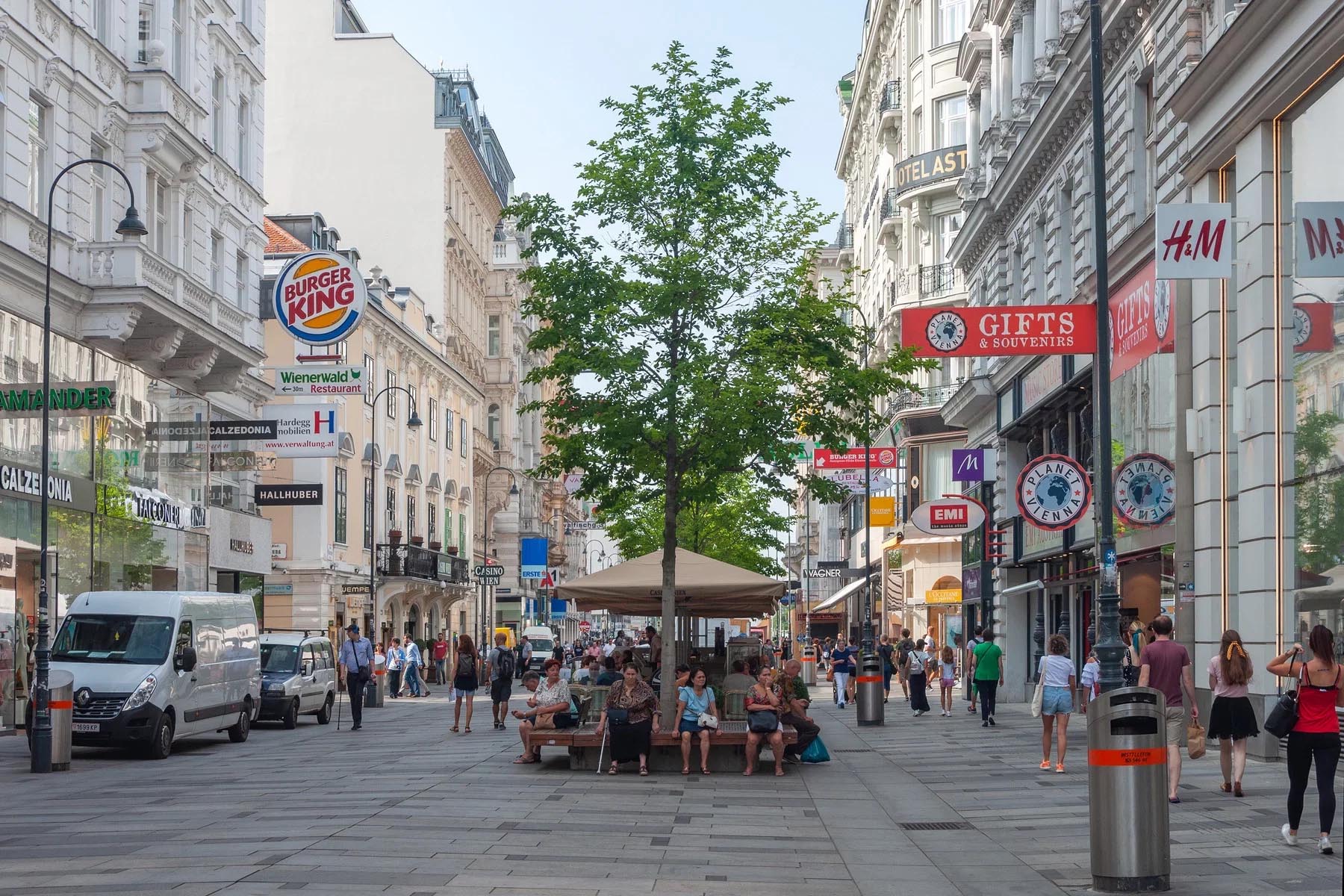
However, this is only because it is a historically working-class neighborhood with affordable public housing and a very dense, multicultural population. As such, in reality, Favoriten is fine to visit – it has beautiful parklands, after all. That said, as an expat, you probably won’t want to live here.
Tips on choosing a neighborhood in Vienna
If you are going to be living in Vienna, there are a few things to remember when it comes to choosing a suitable neighborhood, such as:
- Research the neighborhoods in advance, and if you can, visit them to get a feel for what they are like
- Speak to friends or people who have lived in Vienna for a while
- Check out local expat groups on Facebook
- Think about what are the most important factors for you – safety, schools, grocery stores, nature, etc.
- Consider where you work and what your commute will be like
- See whether you like the style of accommodation available in the district
- Check whether the neighborhood has the transport links you need
- See whether there are other expats in the area, or if it is a very local place
Useful resources
- Accommodation, Virtual Vienna – a site about accommodation in Vienna
- Searching for a flat, City of Vienna – a government site about looking for accommodation in Vienna


